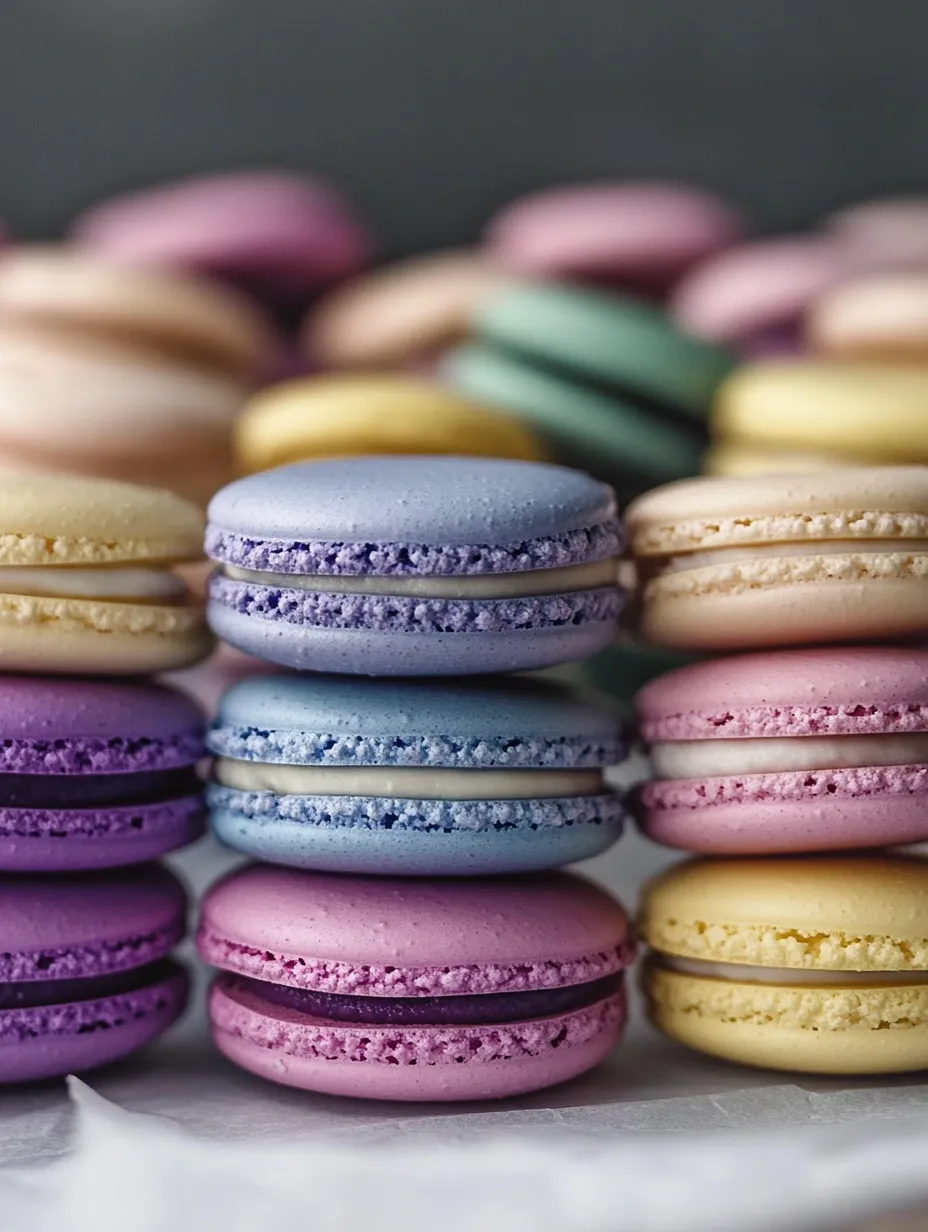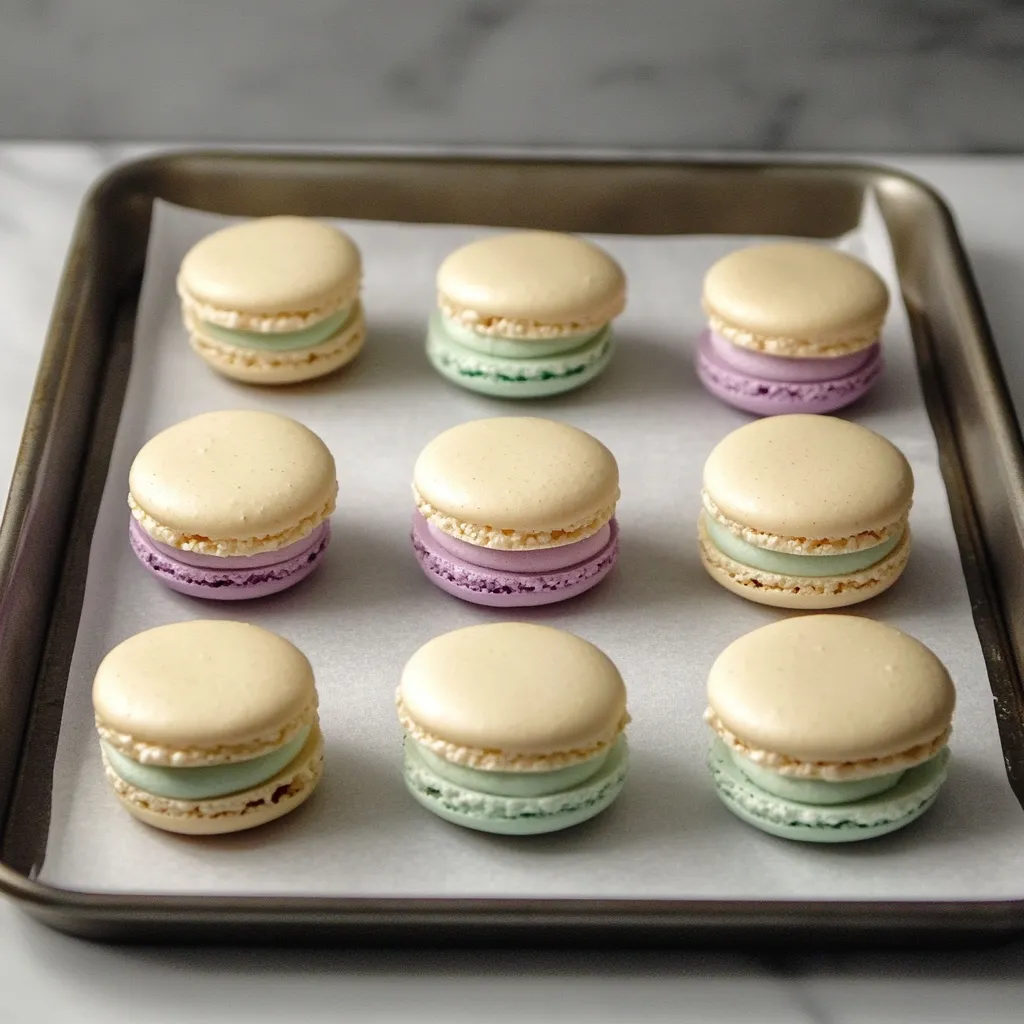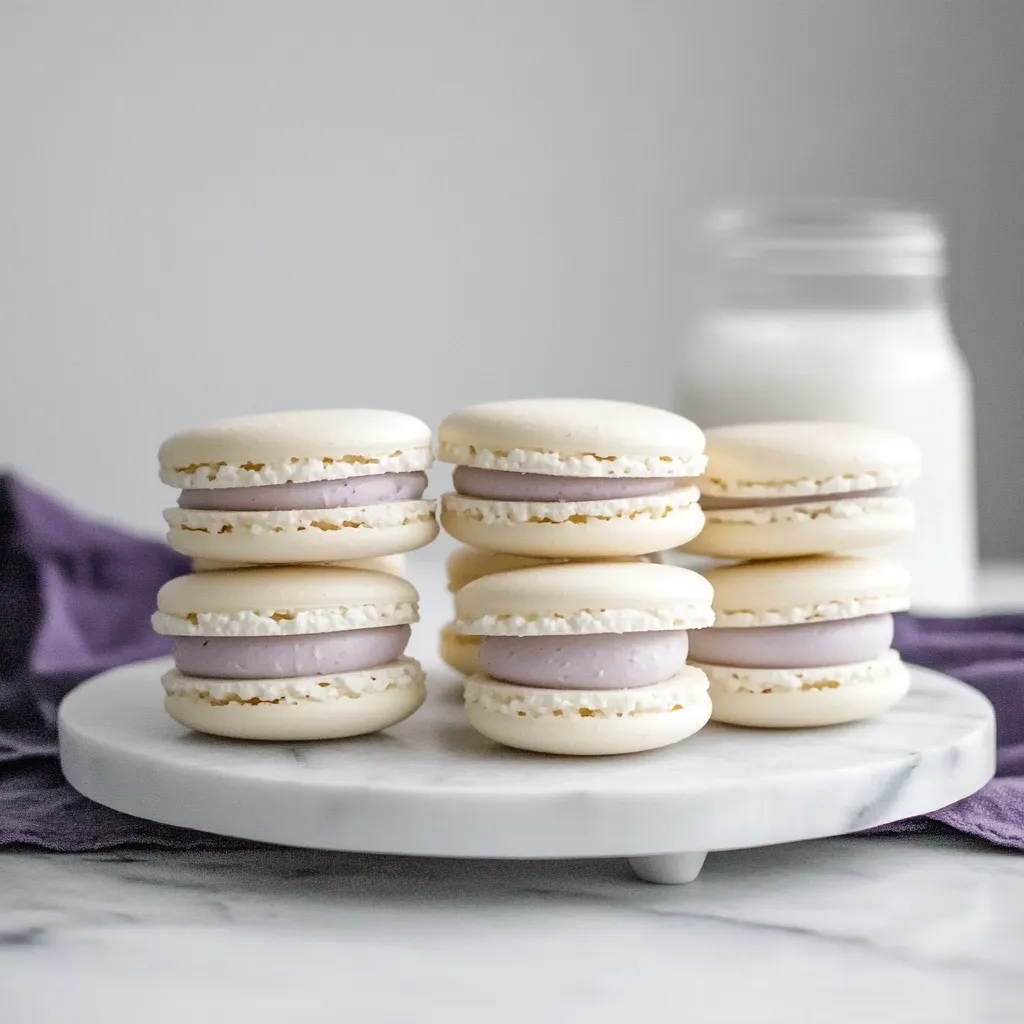 Pin it
Pin it
Creating macarons blends precise science with creative flair, turning basic items into dainty, colorful treats that showcase the best of French baking. Though they might look tricky, getting the hang of key methods and principles makes these fancy cookies doable for anyone at home who's willing to practice and watch the little details.
After making batch after batch and learning plenty along the way, I've found that macaron success comes from knowing the reasons behind every step, not just blindly following directions. When I finally got that perfect batch with smooth tops, pretty feet, and soft centers, it was because I'd figured out how all the pieces work together.
Key Components
- Almond flour: Needs to be ultra-fine and not old - keep it frozen so it doesn't go bad
- Egg whites: Must sit out until warm and be left to age for 1-2 days
- Granulated sugar: Should be very small-grained for the best meringue
- Powdered sugar: Must be sifted and not clumpy
- Food coloring: Only use gel or powder types to keep liquid levels right
 Pin it
Pin it
Basic Process
- Step 1:
- Get everything ready first - weigh and sift all your stuff before you start. Everything depends on exact amounts, so grab a digital scale for measuring.
- Step 2:
- Let your egg whites sit out for 1-2 days after separating them, keeping them loosely covered at room temp. This cuts down moisture and makes the proteins stronger.
- Step 3:
- Run your almond flour and powdered sugar through a sieve three times, tossing any big bits. This makes your shells totally smooth.
- Step 4:
- In a super clean bowl, start beating your room temp egg whites with a tiny bit of salt until they get foamy. Any bit of grease will wreck your meringue.
- Step 5:
- Slowly add your fine sugar while still beating. You want stiff, shiny peaks that stay upright when you lift the beater.
- Step 6:
- Now's the time to add color or flavor if you want. Just remember the color will lighten up a bit during baking.
- Step 7:
- Start the folding process by adding the dry stuff to the meringue in three batches. This step pretty much decides your final texture.
- Step 8:
- Keep folding until your batter flows slowly like honey and makes a ribbon that sinks back into the mix within 20-30 seconds.
 Pin it
Pin it
My first try at macarons taught me that hurrying any part leads to problems. Now I know that every fold of the batter, every minute they rest, has a specific job in making these delicate cookies turn out right.
Perfecting Your Folding Technique
From lots of testing, I've learned getting the right batter texture is make-or-break: Keep track as you fold. Watch how the mix changes. Check the flow often. Stop when it's just right.
Managing Heat Correctly
Getting good results means watching temperatures: Use ingredients that aren't cold. Make sure your oven's heat is steady. Let them cool properly. Store them at the right temp.
Fixing Common Problems
Fast fixes for typical issues: Empty shells? Check your oven. No feet forming? They didn't rest long enough. Cracked tops? Too much air in the mix. Uneven cookies? Try using guide templates.
Next-Level Methods
When you're ready to step things up: Try swirled colors in one shell. Add painted details. Create textured surfaces. Make fun shapes.
Timing is Everything
The best macarons need: Egg whites left out for 1-2 days. Resting time of 30-60 minutes. Setting period after filling (1-2 days). Warming up before eating.
After baking macarons for years, I've realized that winning comes from knowing the science behind each step while keeping the creative touch in how you make them. Whether it's your first try or your hundredth, you'll learn something new about these amazing treats every time.
Building Perfect Structure
Knowing the kitchen chemistry leads to better cookies: How proteins work in egg whites. What sugar does as it crystallizes. Getting moisture just right. How heat changes the structure.
Getting Colors Right
Making beautiful colors means knowing: Why colors get lighter in the oven. How much gel coloring to add. Ways to blend colors together. Options for natural colorings.
Tweaking for Your Kitchen
Making changes based on your situation: What to do when it's muggy. How to adjust for high altitudes. Ways to deal with changing seasons. Controlling your kitchen environment.
Exciting Flavor Combos
Fancy flavor pairings to try: Honey with lavender notes. White chocolate with matcha. Coffee and salted caramel. Earl grey tea blends.
Making Them Look Amazing
 Pin it
Pin it
Display tricks from the pros: Arranging colors that fade into each other. Varying heights when you display them. Creating cool patterns. Ways to package them as gifts.
New Macaron Styles
Checking out what's hot now: Space-inspired designs. Soft watercolor looks. Shiny metallic touches. Cute character shapes.
After making tons of batches and teaching so many people, I now see macarons as more than just cookies - they're where exact science meets creative art, precision meets imagination. Each time you make them is a chance to get better while trying new ideas.
Frequently Asked Questions
- → What does resting macarons do?
- It creates a dry layer, helping form their smooth top and signature feet while baking.
- → Is liquid food coloring okay?
- Nope, stick to gel or powder to avoid ruining the batter’s texture.
- → How can I tell if the meringue is done?
- Lift the whisk out—it’s perfect when the peaks stand tall and don’t fold over.
- → What makes a macaron perfect?
- Smooth outsides, ruffled feet, no hollows inside, and the right mix of crispy and chewy.
- → Why sift the almond flour?
- It gets rid of big bits, helping your cookies stay bump-free and smooth.
